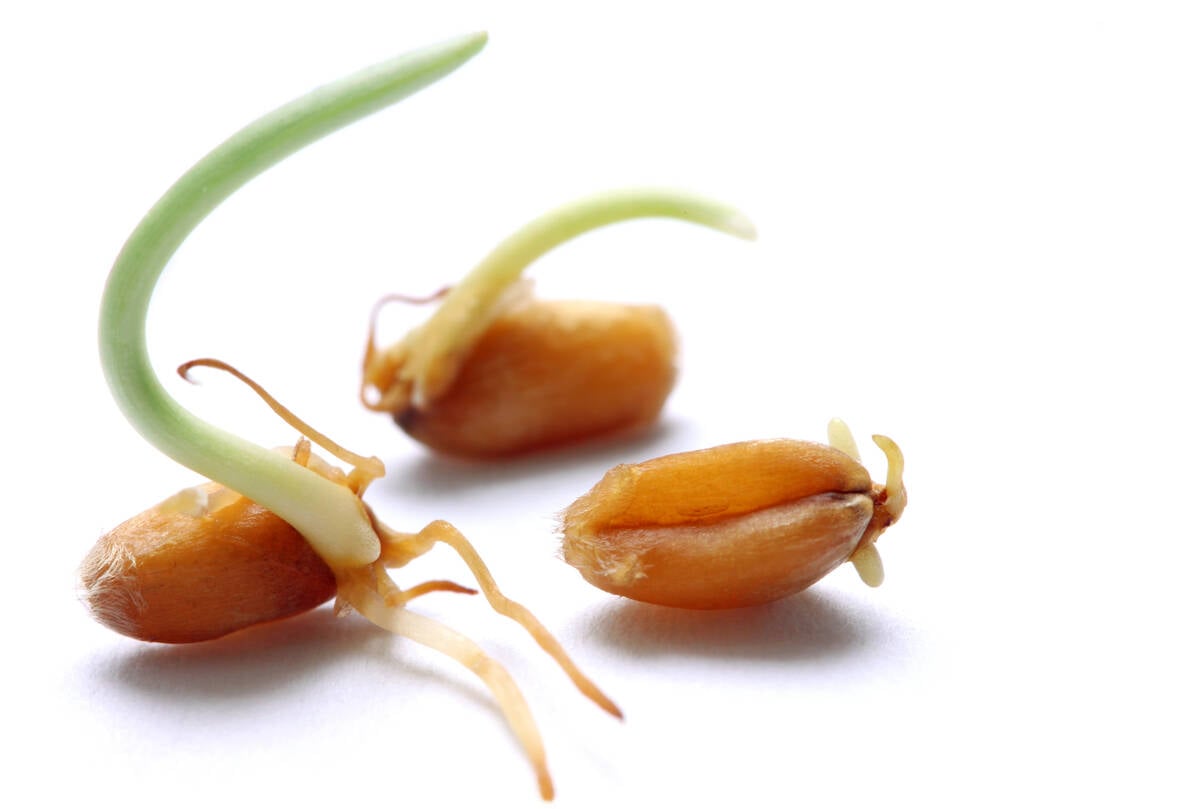When snow piles over machinery left outside, winter eats away at a farmer’s investment by deteriorating tires, belts and bearing seals.
Next spring, rain will rust bare metal parts and the sun will fade the paint.
Storing machinery inside can significantly reduce that damage, says Vern Hofman, an agricultural engineer with the North Dakota State University extension service.
“Next to land, machinery ownership is the second largest cost of a farming operation. It makes good sense to protect that investment.”
Hofman cited a Missouri study of implement dealers in the northern plains that found the trade-in value of housed equipment after five years is greater than the value of unhoused equipment. The savings were 16 percent more for tractors, 20 percent more for harvesting equipment, 12 percent more for planters and drills and five percent more for tillage equipment.
Read Also

Manitoba farmers fight sprouted wheat after rain
Rain in mid-September has led to wheat sprouting problems in some Manitoba farm fields.
The average increase in value for housed machinery is 13.5 percent. Other parts of the United States with more precipitation and more deterioration effects on machinery showed resale values of housed equipment were 20 percent higher than those of equipment stored outdoors.
For example, keeping $800,000 worth of tractors, combines and planters inside instead of outside would mean saving $54,000 after five years, assuming a 50 percent trade-in value and assuming the trade-in is worth 13.5 percent more if the equipment is housed.
Inside storage of a small tractor will increase the trade-in value by $400 to $500 per year. Proper storage of a four-wheel-drive model would add $1,000 to $3,000 per year to the resale value.
“Inside storage also will save money by reducing repairs and time in the shop,” Hofman said.
The survey revealed that housed machinery had only 7.6 percent downtime, while unhoused equipment was down 14.3 percent of the time that it should have been working.
To determine whether a new machinery storage building is a good investment, a method to allocate building costs must be determined.
The building may have alternative uses and will have a longer life than most implements, so the annual cost for the building must be determined. Then, compare the cost to the expected increase in value of the machines stored on an annual basis.
“Based on increased resale value, machines such as tractors, combines, planters, drills, forage choppers, trucks and pickups should be kept inside,” Hofman said.
“Tillage equipment should be the last to be placed inside, since these pieces take up a lot of space and decline in value only slightly faster when left outside.”
If a farm operator does not have enough storage space for major pieces of equipment, it may be a good investment to rent space from a neighbor, Hofman said.














